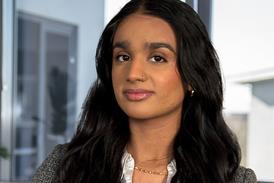The 'fundamental architecture’ for modernising the way in which the family courts deal with vulnerable people could be introduced before the end of the year.
The vulnerable witnesses and children working group, set up by Family Division president Sir James Munby, is expected to publish a consultation on proposed rules for identifying and dealing with vulnerable and intimidated witnesses within the next few weeks.
Munby (pictured) told The Advocate’s Gateway International Conference in London that the family justice system 'lags woefully behind’ the criminal justice system in dealing with vulnerable witnesses. 'Children are virtually invisible in the family courts. On the rare occasion they become visible, we are bad indeed knowing how to deal with them.’
Proper participation in the process, he said, 'starts long before the person gets into the witness box and carries on long after they leave the witness box’.
Munby said the working group would be in a position to ‘crystalise’ the rule and consult on practice directions in the autumn.
'The fundamental architecture of the new scheme will be in place and, I hope, implemented by the end of the year.’
Meanwhile His Honour Judge Peter Rook QC outlined further details of a new training course for advocates who undertake cases involving vulnerable people. Rook is chair of the committee developing the course, set up by the Advocacy Training Council in 2013.
With sex cases accounting for more than a third of contested cases in the Crown court, Rook said the traditional system of advocacy needed to be adapted to meet the needs of the vulnerable. 'But we need to make sure all advocates go through appropriate training.’
The course will include three hours of interactive advocacy training. Part of the course will also be online.
The pilot course is scheduled for 26 September. A presentation will be made to ‘key members’ of the criminal justice system and providers at the Old Bailey in November.
Rook envisaged the courses eventually ’being provided in-house by chambers themselves’. The ultimate objective, he said, was 'this should be part of every advocate’s basic training and, in 10 years’ time, let’s hope that’s what it is’.


























2 Readers' comments